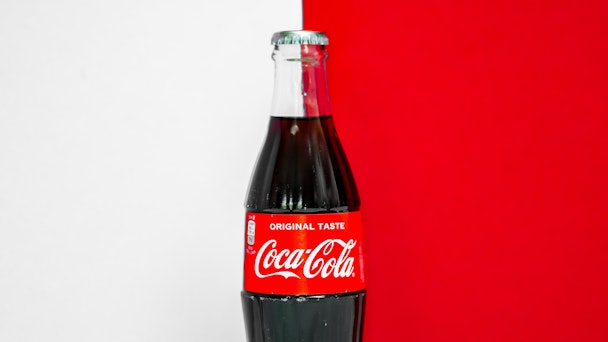Consistency, testing, and tradition: 5 brand secrets of Coca-Cola, Lego and Duracell
How do the world’s best brands stay at the top for so long? Andrew Mirzai of Connective3 delves into what can we learn from them.

How has Coca-Cola (as well as Duracell and Lego) spent so long at the top of the game? / Laura Chouette via Unsplash
Coca-Cola was launched in 1892. Lego, in 1932. Duracell launched in 1965.
All three have stood the test of time, navigating all sorts of trials and tribulations over decades to become timeless parts of everyday life thanks to decades of good marketing. What else do they have in common? I’ve spotted five things.
1. Consistency is key
It takes time to make something popular and instantly recognizable, and if you want brand recognition, your brand needs time to wear in. So, don’t be put off if your mega-creative idea doesn’t land straight away. They sometimes need several rounds to become ingrained in people’s minds.
Coca-Cola, for example, has its iconic red and white logo and its distinctive bottle shape. Its campaigns consistently associate themselves with special moments shared with a glass of coke.
Lego, meanwhile, has its own iconic and unchanged logo, but its true timelessness is created through product design. The Lego brick is instantly recognizable, and the brand uses ads to showcase the endless possibilities of its bricks.
As for Duracell? When I’m looking for batteries in a shop, I scan for copper and black colors; I don’t scan for batteries. Those colors, of course, are virtually now owned by Duracell due to consistency. And who can forget about the Duracell bunny, its mascot, representing the endurance of their batteries?
Advertisement
2. Always be testing, and constantly push through boundaries
If you want to be the best, you need to be doing what everyone else is not doing. That means taking a risk. Coca-Cola delivers on this front, pushing new product lines (although you can’t beat the classic for me) and delivering interactive campaigns. Just search ‘Coca-Cola hug me machine’, and you’ll see what I mean.
Lego, for its part, has its own theme park, video games containing virtual reality experiences, movies – the list goes on.
And Duracell is quite explicit with its swipes against competitors. The Duracell bunny was actually introduced as a parody of the Energizer bunny, laughing at its inferior quality. Duracell’s superior brand power meant it became entrenched in its identity.
Advertisement
3. Emotions sell
“People will forget what you said… what you did, but people will never forget how you made them feel,” said Maya Angelou (among others). If you want to create a memorable brand, attaching yourself to an emotion, not a rational USP, is crucial.
Coca-Cola is known for its strategy of not selling its drinks, but the happiness that (it says) those drinks can bring – through heartwarming ad campaigns that evoke feelings of joy and togetherness. Lego, similarly, showcases the limitless possibilities of a Lego brick empowering kids to build and create whatever they can dream of. And Duracell tells stories by showing the key role their products play in people’s lives, from powering children's toys to keeping essential devices running during emergencies.
Suggested newsletters for you
4. Associate yourself with culture and traditions
Culture and traditions are ingrained in society. Advertisers use them to create mental cues for their brands to be thought of in those moments. John Lewis probably does this better than anyone in the modern era, with its Christmas campaign.
Speaking of Christmas, in my household, it’s not Christmas until I’ve seen the Coca-Cola TV ad. Coca-Cola is now so synonymous with Christmas (there are rumors, which the company denies, that Santa changed the color of his clothes to match the Coke logo).
Lego’s attachment to blockbuster film sets is similar. The brand has collaborated with Star Wars and Harry Potter, and famous landmarks, such as the Eiffel Tower. You can even buy a Lego set for the Friends coffee shop. And Duracell, like Coca-Cola, connects with culture through seasonal events that you don’t want spoiled by a power outage, whether that’s your Christmas tree or a major sporting event.
5. Stand for positive values
Showing you’re contributing to a better world builds credibility and long-term loyalty that goes way beyond a product. Coca-Cola knows this, pushing for inclusivity within its marketing by proving that people from all walks of life can come together and connect through their love of Coke. Lego building has been used as a remedy for children with autism, helping them to develop social skills such as problem-solving and sharing.
And Duracell has gone down the eco-friendly route, with the release of rechargeable batteries several years ago.
Content by The Drum Network member:

connective3
We create market leaders. We do this through the application of digital marketing strategy, adopting SEO, Content Strategy, Digital PR, PPC, Display, Social Media...
Find out more
